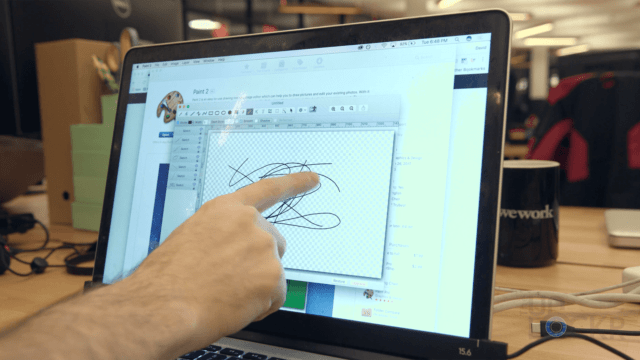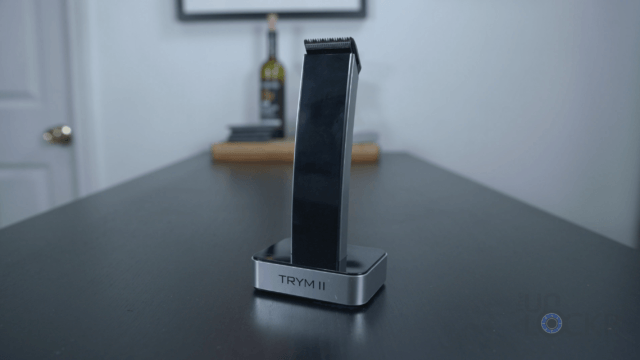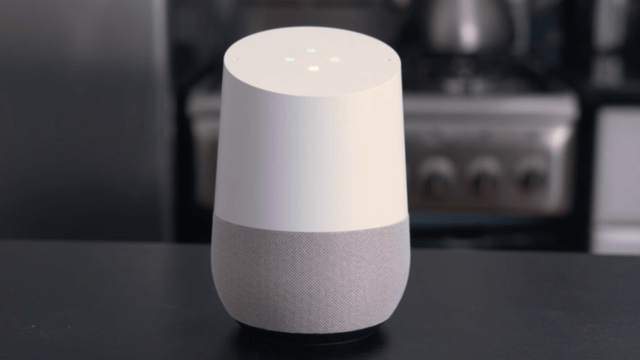HTC One M8 vs Samsung Galaxy S5 (Video)
Looking at these two devices on a spec sheet is a bit like seeing double. Same chipset with a very similar processor speed, same GPU, same screen resolution with a similar screen size, same microSD expandability, similar battery capacities etc. So one can understand why it’s a big question as to which one you should get between these two. Thankfully though, soon as you have them in your hand, differences start to show themselves. These two manufacturers have very different approaches to what they think a flagship phone should look like, feel like, and run like. Let’s explore some of those differences in this HTC One M8 vs Samsung Galaxy S5 comparison.
Performance
[table]
,HTC One M8,Samsung Galaxy S5
CPU,Qualcomm Snapdragon 801 Quad-core 2.3Ghz,Qualcomm Snapdragon 801 Quad-core 2.5Ghz
GPU,Adreno 330,Adreno 330
RAM,2GBs,2GBs
[/table]
Both have very similar performance specs, but using both side by side it’s easy to see what effects Samsung’s TouchWiz UI has on the performance of the Galaxy S5.
Screen
[table]
,HTC One M8,Samsung Galaxy S5
Display Type,Super LCD3,Super AMOLED
Size,5.0″,5.1″
Resolution,1920×1080,1920×1080
[/table]
Super AMOLED is pretty spectacular, don’t think anyone can really argue with that. Blacks are blacker (since the pixel is off and not just displaying black), it’s crisp, etc. The LCD3 that HTC uses is still quite nice, but putting them next to each other causes you to slowly stare harder and harder at the Galaxy S5 like a mosquito to a bug lamp…
Sound
[table]
,HTC One M8,Samsung Galaxy S5
Speakers,Dual Front Facing,Typical Rear Facing Mono Speaker
[/table]
This one isn’t even a close race. The speakers on the front of the HTC are louder, crisper, and stereo (you know, like all of your other electronics you play music from).
Camera
[table]
,HTC One M8,Samsung Galaxy S5
Rear Camera,Dual 4MP Cameras,16MP Camera
[/table]
You have to applaud HTC for trying to be innovative here by going for that blur effect (and other “features”) as more of a priority than megapixels, but even with that Samsung’s larger sensor on their Galaxy S5 makes for a nicer image coming from that rear shooter (plus the added bonus of 4K video shooting isn’t too shabby).
As for the front facing camera, HTC’s wide angle 5MP camera compared to the 2MP Samsung one is the winner here. How much importance that has to you will entirely depend on how much you like taking pictures of yourself…
Software
[table]
,HTC One M8,Samsung Galaxy S5
UI Skin,Sense 6.0,TouchWiz UX 3.0
[/table]
HTC Sense is snappier, more subtle, and more modern while Samsung’s TouchWiz enables a lot of “features” that you wouldn’t normally get on an Android device. Of course, as with any Android device, you can easily remove it (for the most part) and replace it with any of the plethora of custom launchers Android has in the Play Store for download so not a huge deal.
Battery
[table]
,HTC One M8,Samsung Galaxy S5
[/table]
The Galaxy S5 has a 200mah bump of battery capacity over the HTC One M8, but because of that Super AMOLED screen (as amazing as it looks), it needs it. In my experience, the battery life of both is about the same; too short for me (but so are most smartphones).
Price
[table]
,HTC One M8,Samsung Galaxy S5
2 Year Contract Price,$199,$199
Off Contract Price,$639,$649
[/table]
Same price essentially.
Comparison
Looking at these two devices on a spec sheet is a bit like seeing double. Same chipset with a very similar processor speed, same GPU, same screen resolution with a similar screen size, same microSD expandability, similar battery capacities, etc. So one can understand why it’s a big question as to which one you should get between these two. Thankfully though, soon as you have them in your hand, differences start to show themselves. These two manufacturers have very different approaches to what they think a flagship phone should look like, feel like, and run like. Let’s explore some of those differences in this HTC One M8 vs Samsung Galaxy S5 comparison.
The differences begin as soon as you lay your hands on them. HTC’s one piece aluminum body, dual stereo speakers dotted across the front and a heftier weight to it lend a bit more of a premium look and feel to the One M8. Samsung on the other hand went for it’s usual plastic. Plastic in different textures, mind you, an almost rubberized texture on the back that sort of reminds you of leather, sort of. And, of course, the all-inspiring fake metal along the edges that reminds me of hubcaps from Walmart. Needless to say it doesn’t scream luxury.
Regardless there is a spot where Samsung’s hardware does feel a bit more appropriate to it’s price tag and that is the screen. The Super AMOLED screen, a technology that is proprietary to Samsung for a reason, has a better contrast ratio, brighter colors, sunlight visibility, etc. but regardless of the screen’s stats, putting it next to the SLCD of the HTC, and you’ll just say, it looks “better”. Not by much, but still, better.
Next, brings us to the cameras. HTC made a unique design choice by throwing two, smaller 4MP cameras on the back of the device instead of one larger MP one as we are used to seeing, and what Samsung went with. For a full walkthrough of HTC’s camera setup, click the link below, but suffice it to say in this comparison, that the dual cameras allow for you to take photos and then adjust the depth of field to get a more “SLR-looking” photo. Before you comment on how Google camera, downloadable from the Play store and Samsung’s GS5 camera can accomplish the same software wizardry, there is a big difference. HTC’s setup allows you to take a pic and THEN decide if you want to alter it with the depth of field look or just keep it as a regular image, the other options require you to plan this ahead of time and either choose the mode required or actually move your camera to let it create the effect. While that might not sound like much, in the world of cell phone photography where quickly taking pics is the name of the game and you don’t have time to setup every shot, it can be the deciding factor as to whether you bother using it at all.
With that being said, the GS5 camera has a better sensor and therefore, regardless of the amount of megapixels, it just takes better shots. And since the fun depth of field shots don’t always work or aren’t always something you want to use, for the majority of your photos, the GS5 is going to give you a better looking shot.
Now, while trying to show that photo to your friend, on the other hand, you may get a little frustrated. You see, even though both devices have the same chipset, processors, etc. (and even a slight bump in processor power for the GS5), the software on both tips performance in the favor of the HTC. TouchWiz, Samsung’s UI software that sits on top of Android, is slow. It’s one of the downsides to trying to add as many software features as humanly possible into your device. All of them, especially the ones that need to run constantly to check if your doing something (i.e. hovering your finger over the screen) put a strain on the device. Where as HTC and their HTC Sense UI, that has actually removed features since it’s last iteration, is much crisper and less intrusive. Comparing them side by side, you start to notice a difference.
Now, this shouldn’t effect your decision too much however as, with any Android device, you can replace the UI in most places. Replace the launcher, the photos app, messaging app, phone app, etc. And to further speed things up you can even turn off some of the features Samsung added that you feel you won’t actually need to stop them from running (i.e. the finger hover feature that is pretty useless except for that one time you’re too lazy to wipe the BBQ sauce from your hand before looking at the text message you just got). But that, of course, begs the question, why have the features if you can’t use them?
It’s these features that Samsung likes to usually tout as to why their Galaxy devices are better than other phones. From Airview, that allows you to hover over things with your finger to get a preview of them, to AirGestures that allows you to swipe your hand over the device to answer a call, swipe through photos, etc., Samsung has packed their Galaxy devices with software features meant to give you the ability to say, “My phone can do this and yours can’t”. But is that actually true?
Since most of these features don’t require any additional hardware in the phone, there are actually apps in the Android app store that allow you to use the majority of these features on any Android device. Airview, AirGestures, and even the new heart rate monitor (which can be accomplished with an app that uses the camera and flash of any Android device for the most part) all are able to be replicated. So despite Samsung’s marketing campaigns, you really shouldn’t use any of these features as a justification to choose their device over the HTC One M8.
The Galaxy S5 does, however, have two features that are not easily replicated by software; the fingerprint scanner and the fact that it is IP67 certified. The fingerprint scanner, which allows you to swipe down on the home button to unlock your device and to confirm purchases on the device, isn’t the most secure of options. You can always tap the “Alternative Password” button and then your normal password is used so you’re device’s security is only as good as that, like normal, but it IS faster than typing in a pin even and so that’s convenient.
The IP67 certification is a bit more of a deciding factor here. This certification, for all intents and purposes, makes your phone water resistant. That means a quick drop in the toilet, or even purposefully running it under a faucet to get some toothpaste off the screen as Samsung shows in it’s commercial are no problem for it. Swimming with it on the other hand, isn’t recommended. Regardless though, that little extra piece of mind is actually a great feature and actually changes the way you you view your device.
Conclusion
At the end of the day, Samsung has the nicer screen, slightly nicer camera,and the added benefit of the fingerprint scanner and that IP67 certification. The HTC, on the other hand, has a much more premium look and feel to it (hardware and software), and better sound quality thanks to those dual front facing speakers. The choice between the two comes down to which of those things are more important to you.
For the full review of the HTC One M8 or the Samsung Galaxy S5 head to the links below.



